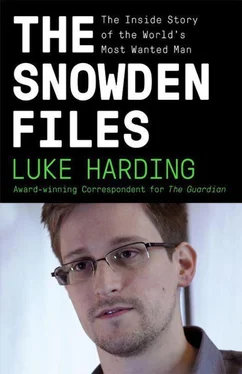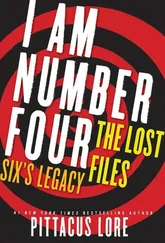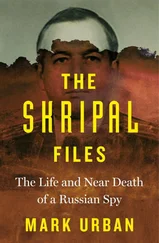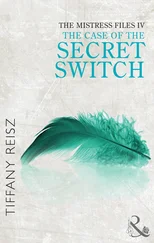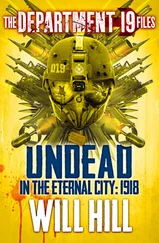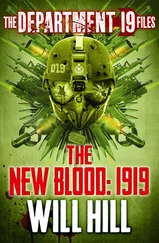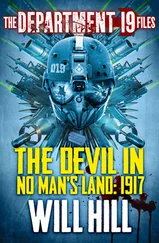When GCHQ staff succeed in supplying their US partner with valuable intelligence, they brag about it. This happened, they say, on at least two recent occasions: the first involved underwear bomber Umar Farouk Abdulmutallab, who in 2009 tried to blow up an airliner bound for Detroit. The second took place five months later when Faizal Shahzad, a 30-year-old US citizen who was born in Pakistan, attempted a car bombing in New York’s Times Square.
The NSA was ‘delighted’ with GCHQ’s ‘unique contributions’ against the US bombers. There is no clue as to what these exact contributions were. For its part, the NSA helped GCHQ with the investigation following the devastating 7/7 atrocities in London in 2005. It was the worst attack in London since the second world war. Four suicide bombers blew up three Tube trains and a bus, killing 52 people.
GCHQ denies routinely circumventing the Five Eyes’ own self-denying rules and carrying out spying on US citizens on the NSA’s behalf. And the NSA denies providing the same ‘revolving door’ service when it comes to collecting intelligence on UK nationals.
Unfortunately, Snowden’s documents appear to give the lie to such claims. He unearthed NSA memos from 2005 and 2007 implying that sometimes the two agencies do target each other’s citizens. The NSA is allowed to include Britons in its mass surveillance databases, ‘when it is in the best interest of both nations’. Furthermore, a procedure is detailed under which the NSA will even spy on UK citizens behind the backs of the British. ‘Under certain circumstances it may be advisable and allowable to target second-party persons and second-party communications systems unilaterally, when it is in the best interests of the US, and necessary for US national security.’
So the Five Eyes’ claim that the gentlemanly western partners do not spy on each other seems simply false. All these dismaying disclosures and the subsequent international uproar meant that – as the leakers and journalists involved were soon to discover – their boldness was making the secret spymasters on both sides of the Atlantic very angry indeed. Snowden himself, Glenn Greenwald and the British reporters back in London at the Guardian were all shortly to feel the effects of that rage.
The Guardian offices, Kings Place, London
June 2013
‘Give me the liberty to know, to utter, and to argue freely according to conscience, above all liberties.’
JOHN MILTON,
Areopagitica
Up on the otherwise silent third floor of Kings Place, a late-night cleaner steered his Hoover around the group clustered at a computer. He was busy chatting in Spanish on his mobile as he passed, and did not seem to register their unease at the sight of him.
Under the eye of deputy editor Paul Johnson, a painfully slow assembly and formatting process was taking place through the night, not to the normal online Guardian network, but on to a big orange LaCie external hard drive – one of the few unused items on the premises capable of holding scores of gigabytes. The stuff was Snowden’s – thousands of highly classified leaked documents in a heavily encrypted form.
It included more than 50,000 files belonging to British intelligence. GCHQ had apparently exported them over to the US, and allowed them to fall into the hands of this junior US private contractor. But one of the reasons for Johnson’s nervousness was that possession of these documents back in Britain presented special – and scary – legal problems.
The Guardian ’s current sleek glass-walled London offices give little hint of the paper’s nonconformist Manchester origins back in 1821. But the lobby does have a bust of a formidable bearded figure; this is CP Scott, legendary editor for 57 and a half years. His famous dictum ‘comment is free, but facts are sacred’ is still the Guardian ’s animating principle.
Inspired by CP Scott’s tough-mindedness, editor-in-chief Alan Rusbridger had handled some big leaks in the past, of which WikiLeaks had been the most recent and famous. But this one was without precedent.
British journalists do not enjoy the constitutional free speech protection of their US counterparts. There is also a strong cultural understanding in the US that journalism has a key function in society. Although this can lead to establishment-minded behaviour sometimes, it has also made possible a tradition of investigative reporting in the spirit of Watergate, when two young Washington Post journalists brought down President Nixon in the 1970s.
Britain, by contrast, has a repressive culture of state secrecy. At the very moment Woodward and Bernstein were being fêted in Washington for their Watergate disclosures, some young journalists in Britain wrote an article called ‘The Eavesdroppers’. It revealed for the first time the mere existence of GCHQ as a British radio spying agency. They were promptly had up and convicted at the Old Bailey under the Official Secrets Act. One, a US citizen named Mark Hosenball, was deported without a right to trial as a purported ‘threat to British national security’.
Against this history, the challenge of publishing top-secret GCHQ documents in a British paper was a sizeable one.
The Official Secrets Act, passed amid fears of German espionage in 1911 and updated in 1989, makes it a crime for British officials to leak intelligence information. But it also has clauses that potentially criminalise journalists. While there is no specific public interest defence so the Guardian ’s editor could be caught by provisions that make it an offence to publish intelligence information, such a disclosure has to be deemed damaging. The only arguable defence would be that the published article was not in fact damaging or, at any rate, not intentionally so. Police moves could therefore be just round the corner.
Mere possession of the Snowden files in London could also lead to a civil gag order, if the British government got to hear about their presence. The files were undoubtedly highly confidential and, while unlikely to identify James Bond-style undercover secret agents, they were certainly the property of the government. National security was at stake.
Under the UK’s law of confidence, a judge could quite possibly be persuaded to grant a government request for an immediate injunction banning all publication of such material, and demanding the files’ return. The paper could challenge this through the courts, by arguing there was a public interest in what it was disclosing. But at best, the case could embroil Rusbridger in a lengthy, uncertain and costly legal battle. In the meantime the paper would be unable to report on any of the documents’ contents. An injunction would therefore be a journalistic disaster.
Hunkered down the next day with prominent media QC Gavin Millar, Rusbridger considered his legal options. The 100 per cent safe course was to destroy all the UK files at once. Another safe alternative was to hand the files to a security-cleared politician and call for an inquiry into their contents – the obvious recipient was former Conservative foreign secretary Malcolm Rifkind. He now chaired the notoriously weak parliamentary intelligence and security committee which was supposed to oversee bodies such as GCHQ. Rifkind would probably hand the files straight back to the spies themselves, unread.
Millar’s advice was one thing. But Rusbridger also had to take into consideration his obligations towards Snowden. Snowden ‘had risked his life to get hold of this stuff’, the editor felt. Furthermore, Snowden had given the material to the Guardian because he believed Congress couldn’t be trusted. The special US courts that dealt with intelligence matters met in secret. Only a newspaper could begin the debate he wanted. And it couldn’t take place if the public remained clueless as to the extent of the state’s suspicion-less surveillance.
Читать дальше
